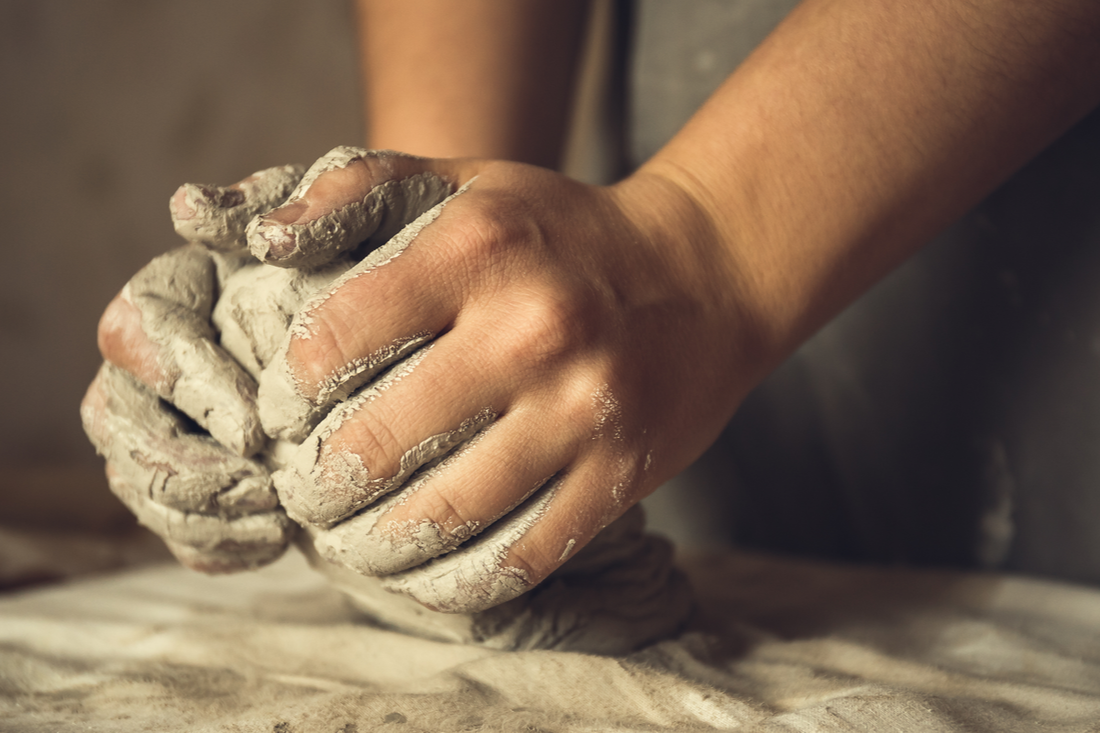|
Many people may not realize that pottery can be made from different types of clay, each having unique properties that produce an intended result when used. Each type of clay consists of different colors, flexibilities, and textures that determine uses, color, firing temperature, and yielded results. With the various types of clay available on the market, knowing what you are buying will help ensure your next project is successful. Let's take a closer look at thefour types of clay used in pottery and the intended use of each.
Earthenware Clay The oldest and most commonly used clay is Earthenware clay. Earthenware clay is very beginner-friendly as it is high in plasticity. This type of clay is primarily found in warm colors such as red, brown, grey, and orange, which show well after being fired. Artists like to work with Earthenware clay as it is easily decorated withpaints and glazes. Sculptors find Earthenware clay precious and versatile, unable to be had sculpted or wheel-thrown. However, if the finished product freezes, it can crack. Ball Clay Ball clays are highly plastic and contain minimal impurities and a high percentage of quartz. Because ball clays occur naturally as sediments and have very fine minerals, they tend to lose color on firing. At the greenware stage, ball clays may be grey then obtain a light buff color after firing. When appropriately fired, some may produce a white hue, which makes it a famous clay among potters. Ball clays are also used in floor tiles, vases, and tableware. Stoneware Clay Stoneware clays have stone-like qualities and are rigid, nonporous, and moderately plastic. These clays vary in grey, white, and brown colors when wet. Firing temperature affects the final color of the product. Containing small amounts of mica and quartz, stoneware clays are easily worked and painted with underglazes, glazes, overglazes, and enamels. Stoneware clays are a popular material for tableware and are suited for both hand-building and wheel throwing. Porcelain Clay Porcelain, or China, clays are popular in dinnerware. These clays are the least plastic of the four types of clay; hence they are pretty challenging to work with. Porcelain clays are created with a large amount of mineral kaolin, giving them a very light greyish tone at the greenware stage. After firing, porcelain clays are white to off-white and can be glazed with enamels. Also known as kaolin clays, porcelain clays fire at high temperatures and produce hard water-resistant products. When choosing the suitable clay for your next project, consider the character of each of these four clays to ensure you select the right materials for your needs.
0 Comments
|
AuthorJim writes most of the dribble for our Banter. Sometimes it's serious, but often not...then, neither is Jim Categories |


 RSS Feed
RSS Feed